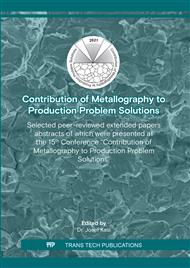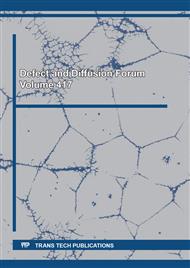p.61
p.67
p.73
p.81
p.87
p.95
p.101
p.111
p.117
Analysis of the Causes of Increased Reject Rate in Connecting Rod Production
Abstract:
A connecting rod manufacturer faced excessive reject rate in production. One of the manufacturing operations involves fracture-splitting the big end of the connecting rod. However, some rods showed excessive deformation after the operation. These connecting rods had to be scrapped. Conforming and nonconforming connecting rods were compared in order to identify the cause of the issue. In one of the nonconforming connecting rods, ductile fracture was found after fracture splitting. Generally, ductile fracture is the preferred mode of fracture. In this case, however, there is a need for the big end bore to split without substantial plastic deformation and therefore, ductile fracture is undesirable. Nonconforming rods were found to have low yield strength. To eliminate ductile fracture and facilitate cleavage fracture, it was recommended to increase yield strength of the connecting rods.
Info:
Periodical:
Pages:
87-93
Citation:
Online since:
June 2022
Authors:
Price:
Сopyright:
© 2022 Trans Tech Publications Ltd. All Rights Reserved
Share:
Citation:



